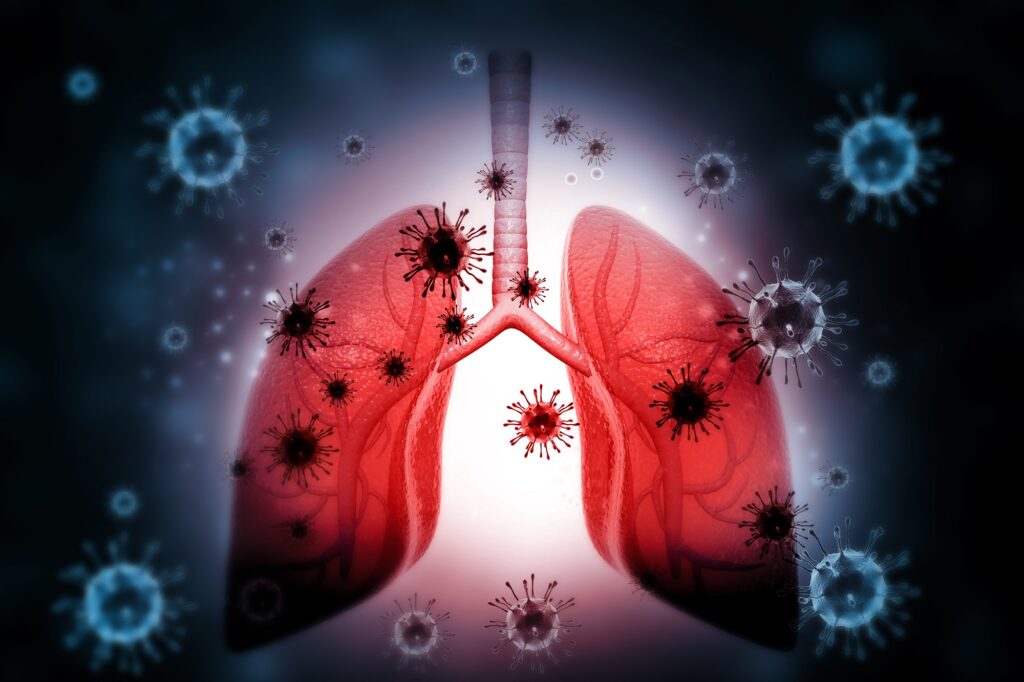
MRSA: What are we Doing to Stop the Spread?
In the clinical setting, whenever someone mentions MRSA, it always grabs my attention. This is because it is commonly pronounced “mersa,” which has an eery phonetic similarity to my own name, Marissa. Its acronym may not turn your head like it does mine, but most people have at least heard of MRSA.
MRSA stands for Methicillin-resistant Staphylococcus aureus and has been around since the 1960s (Henderson et al).
It’s name is a bit misleading though, because it is not resistant to solely Methicillin (a synthetic penicillin), but also other penicillins, cephalosporins, Carbapenems, Monobactams and sometimes others (Siddiqui et al).
MRSA is one of the most common of many antibiotic resistant bacteria that are found in healthcare settings and communities across the globe (Chalmers et al).
Staphylococcus aureus remains “one of the most frequent worldwide causes of morbidity and mortality [meaning disease and death] due to an infectious agent” (Cheung et al). It is also “associated with significant length of stay, and cost burden” (Siddiqui et al). Some of the more recent attempts for advancement in decreasing the spread of MRSA include faster testing, education campaigns on hand hygiene and accessibility of hand sanitizer, reliance on federal funding, and vaccine production; however, none of these methods are adequately extinguishing the spread of the bacteria.
A major breakthrough in the treatment of MRSA has been early identification through nasal PCR testing.
Previously, blood testing took 18-24 hours to complete, often leaving a patient on days of broad spectrum antibiotics before the presence of MRSA is identified (Palavecino). Now, nasal swabs can take as little as 5 hours, drastically decreasing the amount of unnecessary antibiotic use. When used in critically ill pneumonia patients, nasal PCRs were found to decrease the use of broad spectrum antibiotic by an average of just over 2 days (Willis et al). Those patients were also found to spend an average of three less days in the ICU (Raush et al). I don’t know if you’ve ever received a bill after an ICU stay, but I have, and every additional day is thousands of dollars added to your bill. In their review, Carr et al reiterate this by saying that “Significant clinical and financial consequences are associated with both inadequate and unnecessary exposure to broad-spectrum antibiotics.” Carr et al go on to conclude that when used in the right setting, nasal tests found to be negative for MRSA can help decrease “anti-MRSA therapy.”
Probably the biggest and most frustrating part of the spread of this (mostly healthcare acquired) contagion is that we know a simple and low cost way to decrease these infections. It’s hand washing! Yet compliance is not consistent.
Though it is difficult to track, several anecdotal studies exist on the most effective ways to communicate the need to uphold proper handwashing techniques for healthcare workers in the clinical setting. In one study, “a hospital-wide hand hygiene campaign with special emphasis on bedside alcohol-based hand disinfection resulted in sustained improvement in hand-hygiene compliance, coinciding with reducing… infections and MRSA transmission” (Gold et al). If it is as easy as swiping a hand under an automatic hand sanitizer, why have we not seriously cut back on infections in all hospitals? The answer is a multifaceted one. Many healthcare workers are bombarded with video education requirements on top of their day to day work, they are often tired and distracted when they are learning about some of these critical issues not to mention that they are often required to take the same courses over and over for yearly education which can become boring and repetitive. A small study out of Istanbul showed that nurses were far more likely to comply with required hand hygiene techniques after having in-person hand hygiene training (Karaoglu et al.). Sometimes it can be as simple as making hand hygiene convenient. Placing hand sanitizer next to the patient’s bed was shown to increase the incidence of hospital staff hand hygiene with “moderate certainty” (Gold et al). Though we have known for a long time that hand washing reduces transmission, only recently have we begun to find the most effective ways to educate healthcare workers on the practice.
The Hospital-Acquired Condition Reduction Program was initiated and refined by the federal government in an attempt to encourage “hospitals to improve patients’ safety and implement best practices to reduce their rates of infections associated with health care” (CMS).
This is done by decreasing the medicare payments to hospitals with the highest rates of hospital acquired infections (HAIs) and not reimbursing for charges associated with treatment of the HAIs (Hospital-Acquired Condition Reduction Program 1).
The Hospital-Acquired Condition Reduction Program (HACRP) has not shown a benefit in patient outcomes (Arntson et al)
and “Penalization was not associated with significant changes in rates of hospital acquired conditions… or 30 day mortality, and does not appear to drive meaningful clinical improvements” (Sankaran et al). This is to say that the HACRP is not effective at causing a decrease in deaths due to healthcare acquired infections, nor an increase in patient safety in the affected hospitals. This is all without mentioning the racial and ethnic disparities identified following the enactment of the program. Zogg et al found that HACRP scores grew as proportion of Black patients grew and concluded that “Minority-serving hospitals are being disproportionately penalized by the HACRP.” Zogg et al also identified the need for management of disparities in “vulnerable institutions.” The research by Sankaran et al agreed with this reporting that “By disproportionately penalizing hospitals caring for more disadvantaged patients, the HACRP could exacerbate inequities in care.” There have been multiple changes to the structure of the program throughout the years, but again, it is not enough. The government has taken a step in the right direction and has increased public awareness of MRSA and other hospital acquired infections, but the HACRP is not the answer, or needs some drastic improvements.
Though governmental policy has not improved patient outcomes, promising MRSA vaccines are beginning to enter the clinical trial phase.
Due to the difficulties with controlling the spread, “there have been increased research efforts to find effective passive and active immunization strategies against MRSA and other staphylococcal infections” (John et al). These efforts There are already varieties of vaccines being developed “for active and passive immunization” (John et al). One new experimental vaccine published in the Journal of Experimental Medicine finds that 70 percent of mice given the experimental vaccine… survived infections with the bacterium”. None of the mice which did not receive the vaccine survived (Tam et al). There are multiple companies trying to create a vaccine to curb this major health crisis;
however, “all vaccination attempts aimed at preventing S. aureus invasive infections have failed in human trials” (Miller et al).
A vaccine is years in the making and though it may take many more years, there have been significant breakthroughs regarding vaccine production for healthcare acquired MRSA.
Some of the more recent attempts for advancement in decreasing the spread of MRSA include Nasal PCR testing, research into types of education campaigns effective at increasing hand hygiene, the Hospital-Acquired Condition Reduction Program, and emerging vaccine possibilities; however, none of these methods are adequately curbing the spread of MRSA. The use of new testing has greatly influenced the length of antibiotic use and ICU stays, as well as costs for the patients who acquire this infection. In-person hand washing classes for health care workers are increasing compliance. Accessibility of hand sanitizer is making bed-side hand hygiene more prevalent. Vaccine development is moving and shaking and recent research on mice is proving to be promising. While the governmental policy is not doing what we need it to, hopefully in the future it will move away from racial and ethnic disparity and toward making real changes for patient care improvements.
Right now, the most effective way to prevent the disease is to incorporate more handwashing and hand hygiene classes to be taught in hospital settings.
With the monetary drive, I’m sure more companies will turn their efforts toward vaccine production in the future. With new improvements, MRSA may eventually become less of a threat to the world.
Works Cited
Arntson, Emily et al. “Changes in Hospital-acquired Conditions and Mortality Associated With the Hospital-acquired Condition Reduction Program.” Annals of surgery vol. 274,4 (2021): e301-e307. doi:10.1097/SLA.0000000000003641
Carr, Daley et al. “Clinical Utility of Methicillin-Resistant Staphylococcus aureus Nasal Screening for Antimicrobial Stewardship: A Review of Current Literature.” Pharmacotherapy vol. 38,12 (2018): 1216-28. doi: 10.1002/phar.2188.
Chalmers, Wylam et al. “Methicillin-Resistant Staphylococcus aureus Infection and Treatment Options.” Methods in molecular biology (Clifton, N.J.) vol. 2069 (2020): 229-51. doi: 10.1007/978-1-4939-9849-4_16.
Cheung, Bae et al. “Pathogenicity and virulence of Staphylococcus aureus.” Virulence vol. 12,1 (2021): 547-69. doi: 10.1080/21505594.2021.1878688.
CMS. “Hospital Acquired Conditions | CMS.” Www.cms.gov, 27 Oct. 2023, www.cms.gov/medicare/quality/value-based-programs/hospital-acquired-conditions.
Gold, Mirza et al. “Alcohol Sanitizer.” National Center for Biotechnology Information, U.S. National Library of Medicine, pubmed.ncbi.nlm.nih.gov/30020626/. Accessed 18 Mar. 2024.
Henderson, Andrew, and Graeme R Nimmo. “Control of healthcare- and community-associated MRSA: recent progress and persisting challenges.” British medical bulletin vol. 125,1 (2018): 25-41. doi: 10.1093/bmb/ldx046.
Hospital-Acquired Condition Reduction Program Fiscal Year 2020 Fact Sheet. Centers for Medicare & Medicaid Services. July 2019, www.hhs.gov/guidance/sites/default/files/hhs-guidance-documents/FY2020_HACRP_FactSheet.pdf.
John, Chandy C, and John R Schreiber. “Therapies and vaccines for emerging bacterial infections: learning from methicillin-resistant Staphylococcus aureus.” Pediatric clinics of North America vol. 53,4 (2006): 699-713. doi: 10.1016/j.pcl.2006.05.004.
Karaoglu, Mete K, and Semiha Akin. “Effectiveness of Hygienic Hand Washing Training on Hand Washing Practices and Knowledge: A Nonrandomized Quasi-Experimental Design.” Journal of continuing education in nursing vol. 49,8 (2018): 360-71. doi: 10.3928/00220124-20180718-07.
Miller, Fowler et al. “Development of a vaccine against Staphylococcus aureus invasive infections: Evidence based on human immunity, genetics and bacterial evasion mechanisms.” FEMS microbiology reviews vol. 44,1 (2020): 123-53. doi: 10.1093/femsre/fuz030.
Palavecino, Elizabeth L. “Rapid Methods for Detection of MRSA in Clinical Specimens.” Methods in molecular biology (Clifton, N.J.) vol. 2069 (2020): 29-45. doi: 10.1007/978-1-4939-9849-4_2.
Raush, Betthauser et al. “Prospective Nasal Screening for Methicillin-Resistant Staphylococcus aureus in Critically Ill Patients With Suspected Pneumonia.” Open forum infectious diseases vol. 9,1 (2022). doi.org/10.1093/ofid/ofab578.
Sankaran, Roshun et al. “Changes in hospital safety following penalties in the US Hospital Acquired Condition Reduction Program: retrospective cohort study.” BMJ (Clinical research ed.) vol. 366 l4109. 3 Jul. 2019, doi:10.1136/bmj.l4109
Siddiqui, Abdul H, and Janak Koirala. “Methicillin Resistant Staphylococcus Aureus (MRSA).” National Library of Medicine, StatPearls Publishing, 2 Apr. 2023, www.ncbi.nlm.nih.gov/books/NBK482221/.
Tam, Kayan, et al. “Targeting Leukocidin-Mediated Immune Evasion Protects Mice from Staphylococcus Aureus Bacteremia.” Journal of Experimental Medicine, vol. 217, no. 9, 30 June 2020, https://doi.org/10.1084/jem.20190541.Willis, Allen et al. “Impact of a pharmacist-driven methicillin-resistant Staphylococcus aureus surveillance protocol.” American journal of health-system pharmacy : AJHP : official journal of the American Society of Health-System Pharmacists vol. 74,21 (2017): 1765-73. doi.org/10.2146/ajhp160964.
This research paper was written for a magazine about antibiotic resistance to provide education about the risks of antibiotic resistant bacteria and recent breakthroughs.
